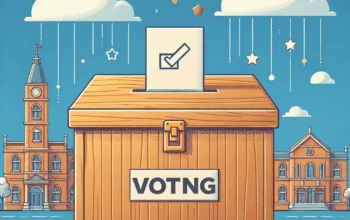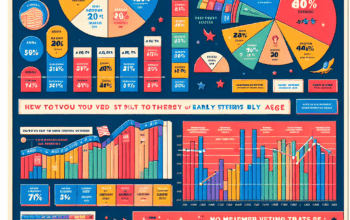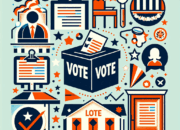Introduction
As the dust settles on the final political debates of 2025, viewers and analysts alike are buzzing with excitement over the exchange of ideas, policies, and personalities that unfolded. These debates provided a unique window into the candidates’ strategies, adaptability, and visions for the future, as they made their case to a divided electorate. In this comprehensive recap, we dive into the highlights from these showdowns, exploring the key moments, crucial arguments, and the overall impact on the political landscape. Join us as we dissect the pivotal debates that may very well shape the 2025 election outcome, providing voters with the insights needed to make informed decisions.
Section 1 Heading (Debate Strategies and Styles)
The final debates of 2025 showcased a variety of strategies and speaking styles that left a significant mark on the audience. Each candidate had to navigate a minefield of complex issues, all while trying to present themselves as the most competent choice for President. One strategy that emerged prominently was the use of direct confrontation. Candidates like Sarah Thompson and Mark Rodriguez capitalized on this approach, challenging each other’s records and policy proposals head-on. This tactic not only highlighted their positions but also allowed voters to see how candidates would respond under pressure, an important factor in leadership assessments.
In contrast, others took a more measured approach, focusing on laying out their vision while sidestepping personal attacks. Elaine Johnson exemplified this strategy, consistently steering the conversation towards unity and bipartisanship. By maintaining a calm demeanor and presenting detailed policy proposals, she aimed to capture the undecided voters who prioritize stability over conflict. The duality of these approaches added a rich layer of depth to the discourse, inviting viewers to reflect on the effectiveness of different styles in political communication.
Section 2 Heading (Key Issues Addressed)
One of the most significant aspects of the 2025 debates was the focus on pressing national issues that resonate with voters. Climate change emerged as a hot topic, with each candidate presenting their plans to tackle the crisis. Candidates like Roger Kim, who emphasized technological innovation and green energy investments, attempted to attract younger voters who are particularly passionate about environmental issues. His bold proposals, which included a transition to 100% renewable energy by 2030, signified a clear shift in policy direction compared to past elections, likely reflecting the growing urgency of climate action in public discourse.
Health care was another critical subject that persisted throughout the debates, with candidates discussing their visions for reform. While some advocated for a universal healthcare system, others defended a mixed-market approach. This divide accentuated the candidates’ differing philosophies on governance and social responsibility. The aggressive back-and-forth not only clarified positions for voters but also led to heated exchanges that captivated the audience, demonstrating the stark contrasts in how each candidate plans to handle one of America’s most pressing concerns.
Section 3 Heading (Memorable Moments from the Debates)
The debates were not just a platform for policy discussion; they were also a stage for memorable moments that defined the candidates’ campaigns. One of the standout instances involved a surprise interruption when Mark Rodriguez made a bold statement about the integrity of election processes. His assertion that voter suppression was rampant, followed by a heartfelt story of a friend who experienced difficulties in casting their ballot, resonated deeply with audiences. It not only highlighted a significant aspect of electoral integrity but also showcased his personal connection to the issue, painting him as a passionate advocate for democratic rights.
Another unforgettable moment came from Sarah Thompson, who delivered a fiery rebuttal during a discussion on immigration. Her passionate defense of vulnerable populations and insistence on compassionate policy reforms electrified the audience, leading to an impromptu round of applause from the live crowd. This moment captured the emotional tenor of the debates and illustrated how effectively a candidate can connect with voters on a personal and ethical level, often swaying undecided voters to their side.
Finally, Elaine Johnson’s calm and collected response to a provocation from Rodriguez regarding her proposed tax reforms was particularly noteworthy. Rather than becoming defensive, she calmly detailed the necessity of her approach, emphasizing the benefits for middle-class families. This moment stood out for demonstrating a candidate’s resilience and poise under pressure, qualities that many voters find desirable in their future leaders.
Section 4 Heading (Public Reactions and Media Coverage)
The public’s reaction to the final debates of 2025 has been overwhelmingly analyzed across social media platforms, news outlets, and political forums. Instant reactions on Twitter indicated that many viewers appreciated candid moments and emotional exchanges, particularly those that humanized the candidates. Polling data immediately following the debates suggested that Mark Rodriguez experienced a surge in popularity, likely due to his charismatic presence and relatable anecdotes. Meanwhile, Elaine Johnson received praise for her steady and knowledgeable articulation of complex policy issues, with many commentators noting that she effectively communicated a sense of calmness and reliability.
Media coverage post-debate also played a pivotal role in shaping public perception. Major networks and online platforms provided extensive analysis, dissecting each candidate’s performance with a fine-toothed comb. Talk show hosts and pundits engaged in lively discussions about the political implications of each debate moment, further amplifying the soundbites that resonated with audiences. This coverage influenced the narrative of the candidates’ viability leading into Election Day, effectively framing expectations and voter sentiments through expert commentary.
Moreover, public opinion polls were quickly conducted after the debates, showcasing shifts in voter preference that could swing the final vote. These reactions were indicative of the debates’ immediate impact, revealing which candidates effectively communicated their messages and resonated with crucial voter demographics.
Section 5 Heading (Impact on the Election Outcome)
As the election day approaches, the influence of the final debates cannot be understated. The candidates’ performances have motivated campaign strategies and tactics in the crucial days leading up to voting. With only a few weeks left in the race, candidates will undoubtedly seek to reinforce the messages and themes that resonated during the debates. For instance, the emphasis on unity and bipartisanship highlighted by Elaine Johnson may lead to an increased focus on outreach efforts to moderate voters who feel disillusioned by extreme partisanship.
On the other hand, the bold claims made by Mark Rodriguez may inspire a more aggressive campaign strategy that emphasizes mobilization of the youth and minority voters who responded positively to his platforms. The debate stage has shifted the landscape of the campaign trail; candidates now feel the pressure to assure their intended supporters that their policies are viable and that their envisioning reflects the electorate’s hopes and concerns.
Moreover, upcoming polls will likely reveal whether the moments of clarity, emotional resonance, and policy detail presented in these debates will translate to voting behavior. Analysis of these trends will be crucial for understanding how effectively candidates can adapt their messages and strategies in the closing weeks of the campaign. The debates have undoubtedly set the stage for an exciting election, underscoring the power of public discourse in shaping the political landscape.
Conclusion
The final debates of 2025 provided a rich tableau of political discourse, revealing the candidates’ strategies, issues at stake, and memorable moments that captured the audience’s heart. From the fervent discussions on climate change and healthcare to the unforgettable personal stories that gave voice to individual struggles, these debates showcased the myriad of factors influencing voter sentiments. Public reactions and the subsequent media coverage reflected the pivotal role of debates in the democratic process, highlighting how they can shape perceptions leading into Election Day. As we move forward, it remains to be seen how these final showdowns will influence the outcome, underscoring the importance of engaged and informed voting.
FAQs Section
What were the main topics discussed in the 2025 debates?
The main topics included climate change, healthcare, immigration, and electoral integrity. Each candidate presented their proposals and perspectives on how to address these critical issues, which resonate deeply with the electorate.
How did media coverage influence public perception of the debates?
Media coverage provided extensive analysis and commentary on candidates’ performances, shaping the narrative around their viability and influencing voter sentiment through expert insights, which highlighted key moments that resonated with audiences.
Can debate performance affect election outcomes?
Yes, debate performance can significantly affect election outcomes by shaping voter perceptions, influencing campaign strategies, and potentially swaying undecided voters in the crucial weeks leading up to Election Day. Understanding the debates can provide vital insights for voters making their choices.












